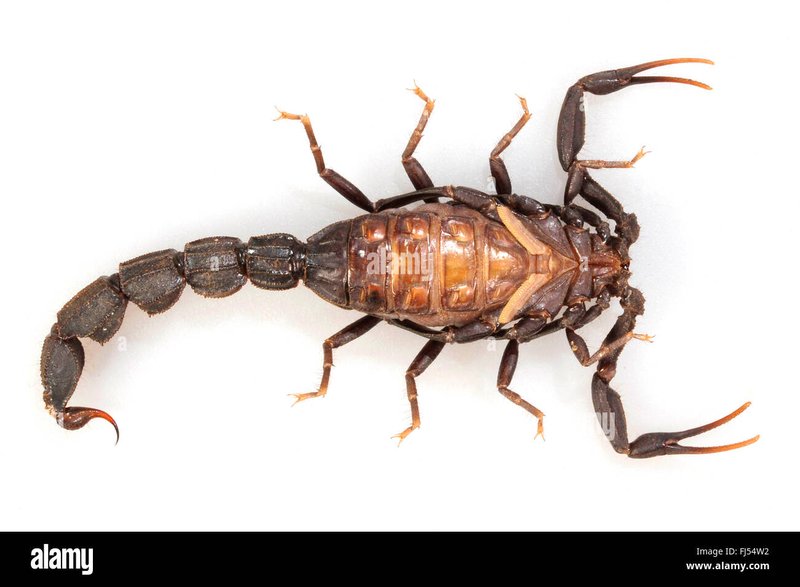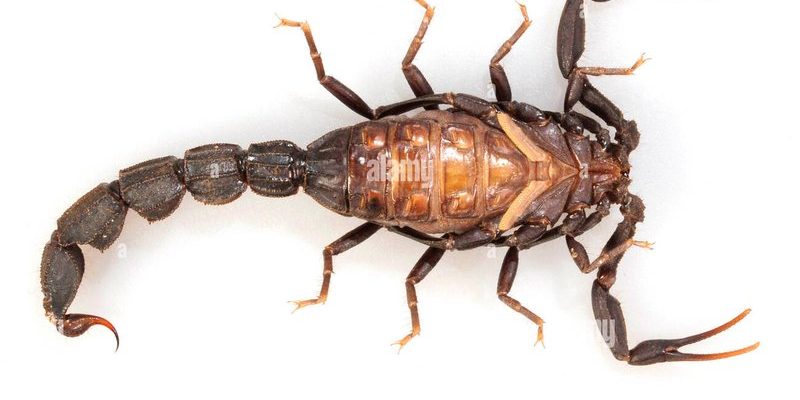
The fat-tailed scorpion, primarily known for its robust body and potent sting, is a fascinating example of nature’s design. Those chunky tails are more than just a feature; they’re effective tools for hunting and defense. Picture them like the heavyweight champions of the arachnid world—big, bold, and ready to face the challenges of their environment. So, let’s dive into how these intriguing creatures contribute to their ecosystems and why they deserve our respect.
What Are Fat-Tailed Scorpions?
Fat-tailed scorpions belong to the family *Buthidae*, and their scientific name is *Androctonus*. They’re primarily found in arid regions of North Africa and the Middle East, where they thrive in the hot, dry climate. These scorpions are easily recognizable thanks to their well-developed tails that make them appear stout and powerful.
You might be wondering why these scorpions are so fascinating. Well, they not only have a distinct look, but they also sport one of the most potent venoms among scorpions. The venom serves multiple purposes: hunting prey, defending against predators, and even competing with rivals over territory. Their venom can cause severe pain in humans and, in some cases, can be fatal. But don’t let that scare you; they primarily use their venom for self-defense and capturing food.
Despite their fearsome reputation, fat-tailed scorpions also play a crucial role in the ecosystem. They help maintain a balance between predator and prey, and without them, the environment would face disruptions.
The Role of Fat-Tailed Scorpions as Predators
Fat-tailed scorpions have a reputation as skilled hunters. They primarily feed on insects, such as crickets and beetles, and sometimes even small rodents. Their hunting techniques are fascinating: they can lie in wait for hours, blending into their surroundings, until they detect movement. Once prey is in range, they spring into action, using their pincers to grab and immobilize it before delivering a swift sting.
This predatory behavior is essential for the health of their ecosystem. By controlling the population of insects, fat-tailed scorpions help prevent overpopulation, which can lead to crop damage and other ecological imbalances. Imagine a garden where pests can multiply unchecked—fat-tailed scorpions help keep that scenario at bay by ensuring that insect populations remain stable.
Furthermore, these scorpions are also preyed upon by larger animals, like birds and mammals. This connection ensures that their role as both predator and prey creates a balanced food web, contributing to overall ecosystem health.
How Fat-Tailed Scorpions Impact Soil Health
It’s quite surprising how these little creatures can have a big impact on soil health. Fat-tailed scorpions help aerate the soil as they burrow and move around. Their digging creates tiny tunnels, allowing air and moisture to penetrate deeper, which is vital for plant roots to thrive.
Healthy soil is essential for robust plant growth. Plants, in turn, provide habitat and food for various creatures, sustaining the entire ecosystem. So, by simply going about their lives, fat-tailed scorpions contribute to a thriving environment.
Additionally, the decay of their prey adds organic matter to the soil, which enriches it further. This process creates a continuous cycle of nutrients that fosters plant growth and supports diverse wildlife.
The Importance of Fat-Tailed Scorpions in Biodiversity
Biodiversity is a key element of healthy ecosystems, and fat-tailed scorpions are crucial players in this game. They are part of a larger community of species that interact with each other, forming complex relationships within their environments.
As predators, fat-tailed scorpions help regulate the populations of insects and other small creatures. This balance is essential because diverse species compete for resources, ensuring that no single species dominates. A decline in predator species like the fat-tailed scorpion can lead to an explosion of prey populations, drastically altering the ecosystem.
Moreover, these scorpions serve as indicators of environmental health. When scorpion populations decline, it can signal changes in the environment that may affect other species as well. By studying their populations, scientists can gain insights into the overall health of an ecosystem, making these scorpions not just vital for their immediate surroundings, but also for larger conservation efforts.
Scenarios of Human Interaction with Fat-Tailed Scorpions
You might be surprised to learn that humans often encounter fat-tailed scorpions, especially in regions where they are common. This proximity can lead to various interactions, some of which can be problematic. For instance, accidental encounters can lead to stings, which are painful and can require medical attention.
To minimize risks, it’s essential to be aware of your surroundings in areas where these scorpions thrive. Wearing sturdy shoes when hiking or exploring can help protect against accidental stings. Schools and communities in affected regions often educate residents about these creatures to foster coexistence rather than fear.
On a more positive note, fat-tailed scorpions can also benefit humans through scientific research. Their venom has been studied for potential medicinal properties, including pain relief and cancer treatment. So, while they may seem daunting, their contributions to science could one day benefit us all.
Conservation of Fat-Tailed Scorpions and Their Habitats
Due to habitat destruction and climate change, many species of fat-tailed scorpions are facing threats. Losing their natural habitats can disrupt their populations and, consequently, the ecosystems they support.
Conservation efforts are essential to protect these unique arachnids. By preserving their habitats and promoting awareness, we can help ensure their survival. Community initiatives that focus on sustainable land use can significantly impact the health of these environments.
You might ask how you can help. Supporting conservation organizations or participating in local clean-up efforts can make a difference. Every little bit helps in maintaining the balance of these ecosystems.
The fat-tailed scorpion may seem intimidating, but when you take a moment to appreciate its role in nature, it’s easier to understand their importance. From controlling insect populations to promoting soil health, these creatures contribute significantly to their ecosystems. By recognizing their value and supporting conservation efforts, we can foster a healthier environment for all.
So, the next time you think about fat-tailed scorpions, remember they’re not just lurking under rocks. They’re active participants in a delicate dance of life, keeping our ecosystems in balance. Who knew such small creatures could have such a big impact? Let’s work together to respect and protect these remarkable arachnids for generations to come.

